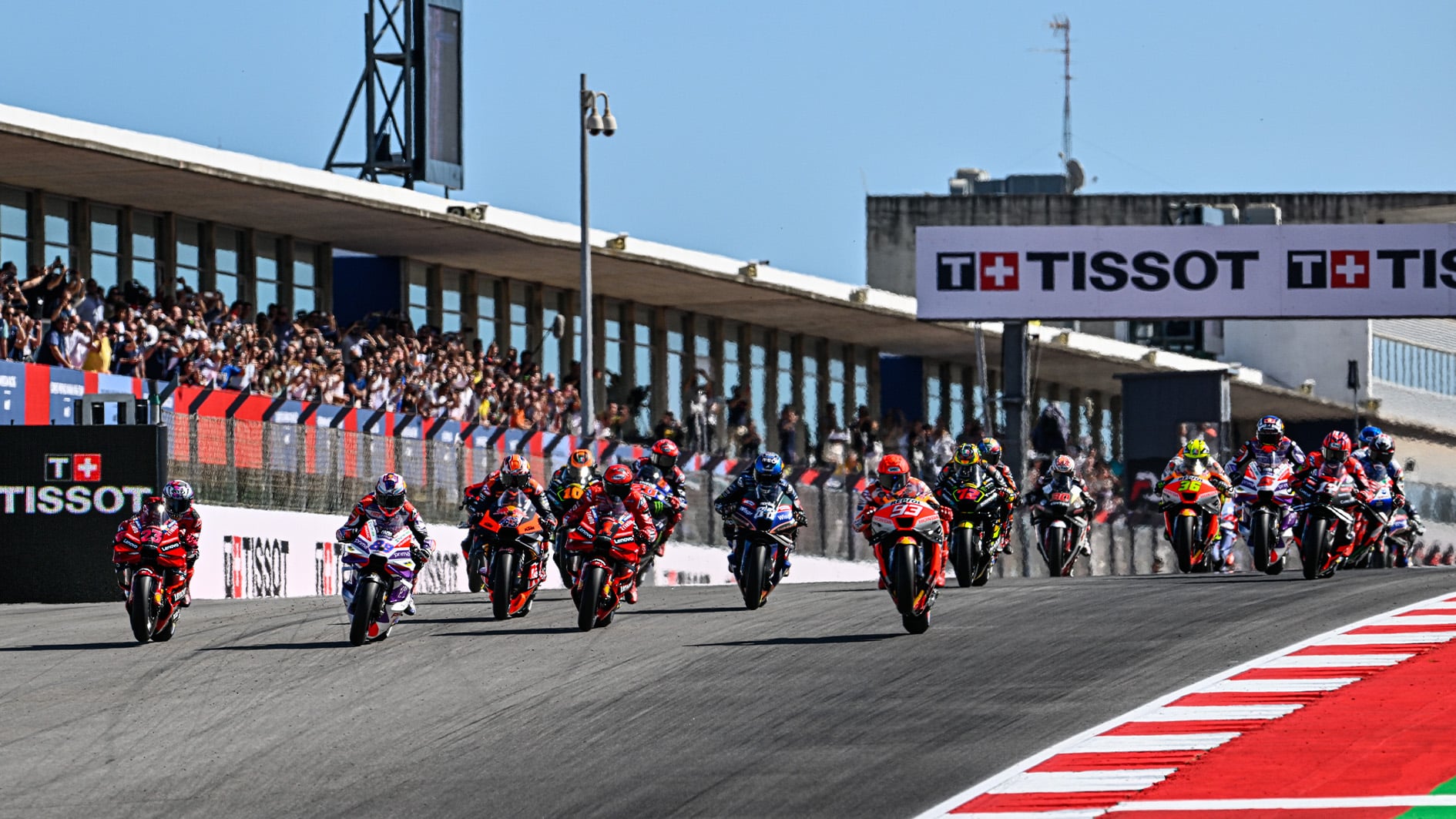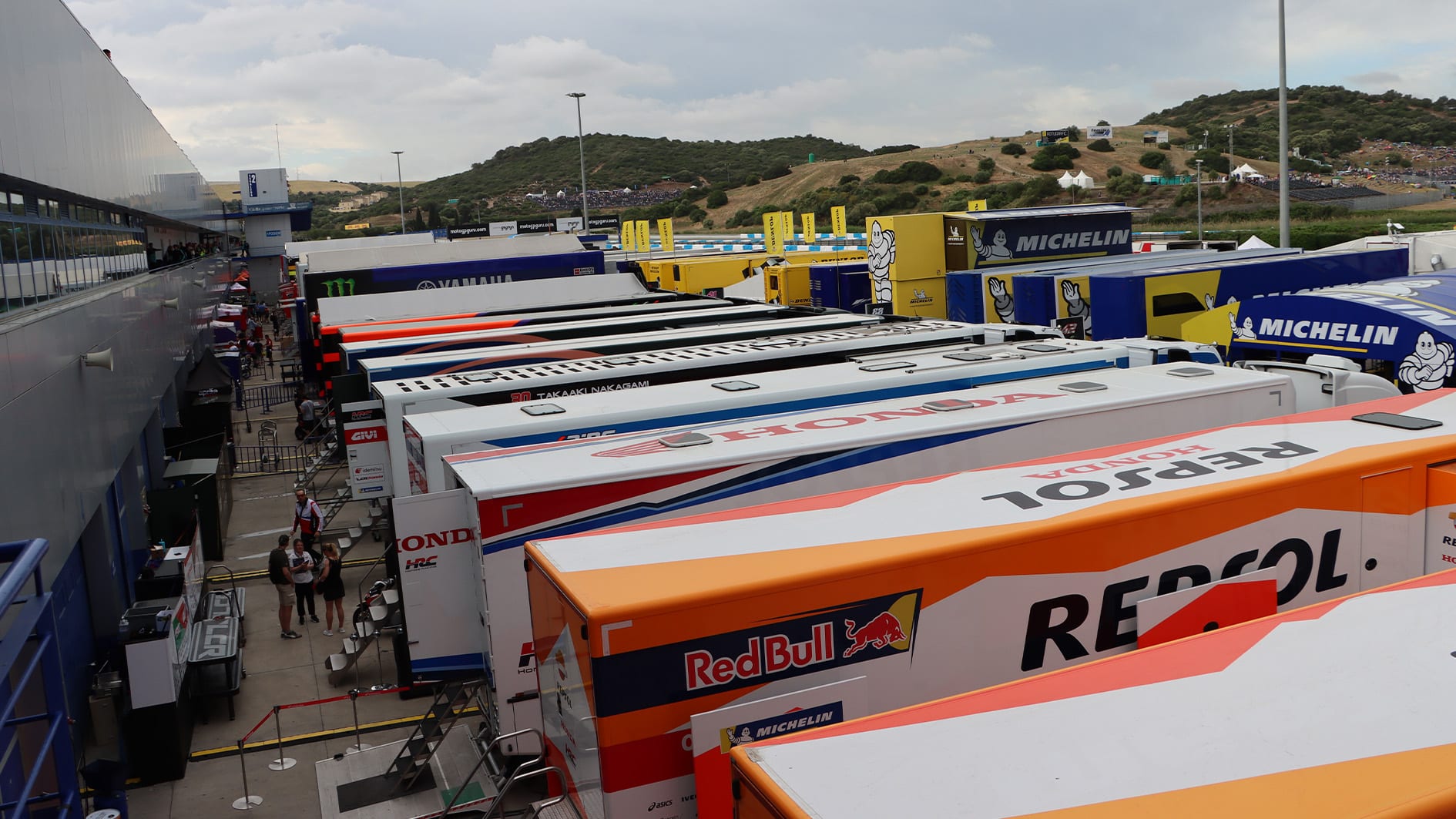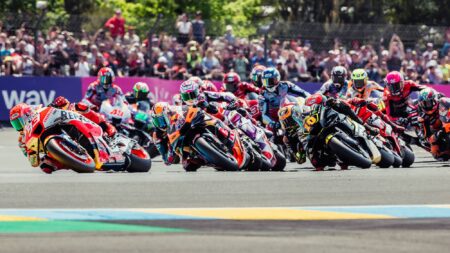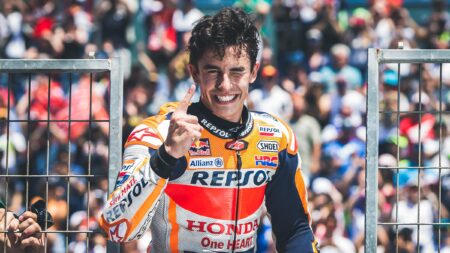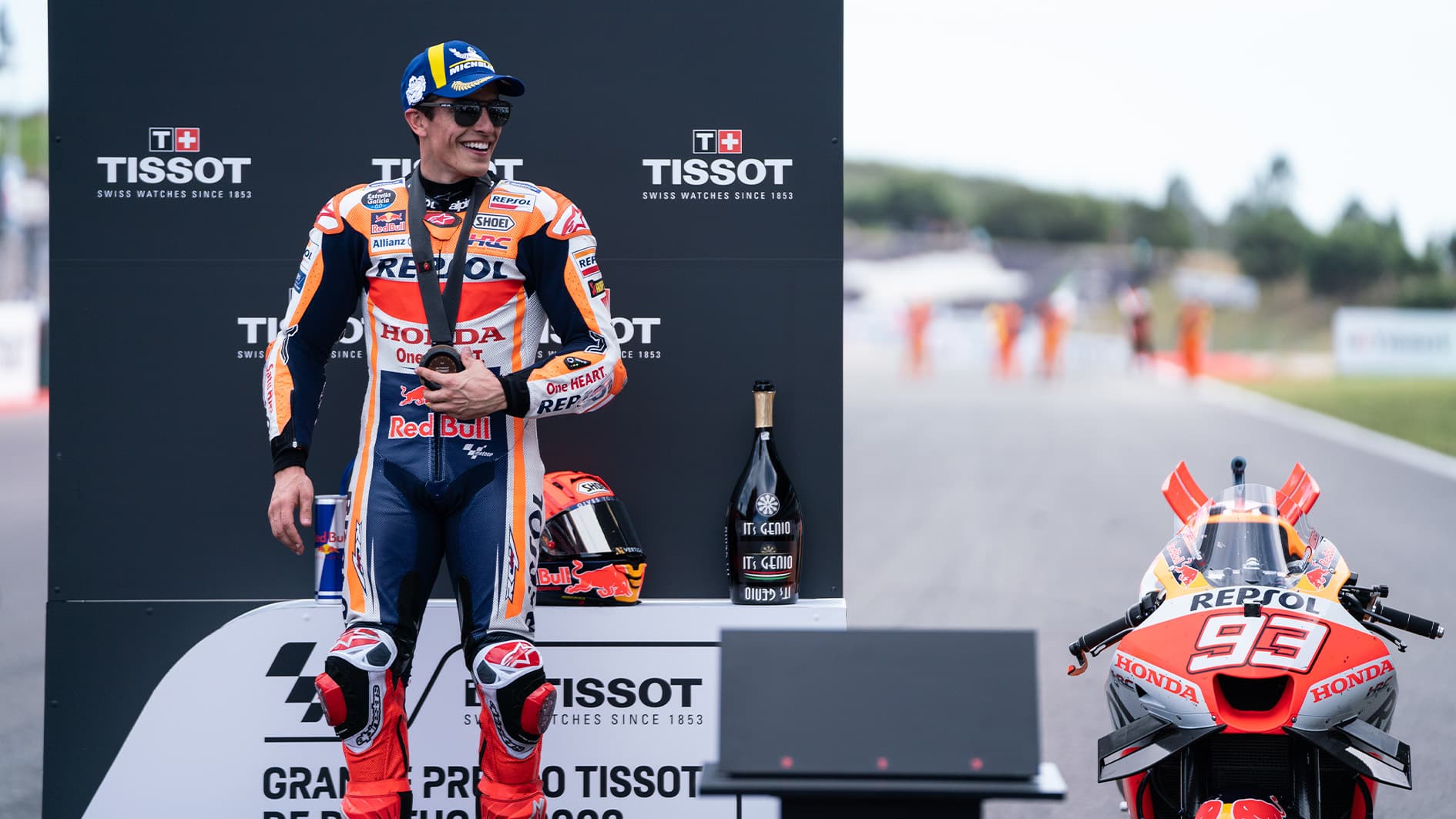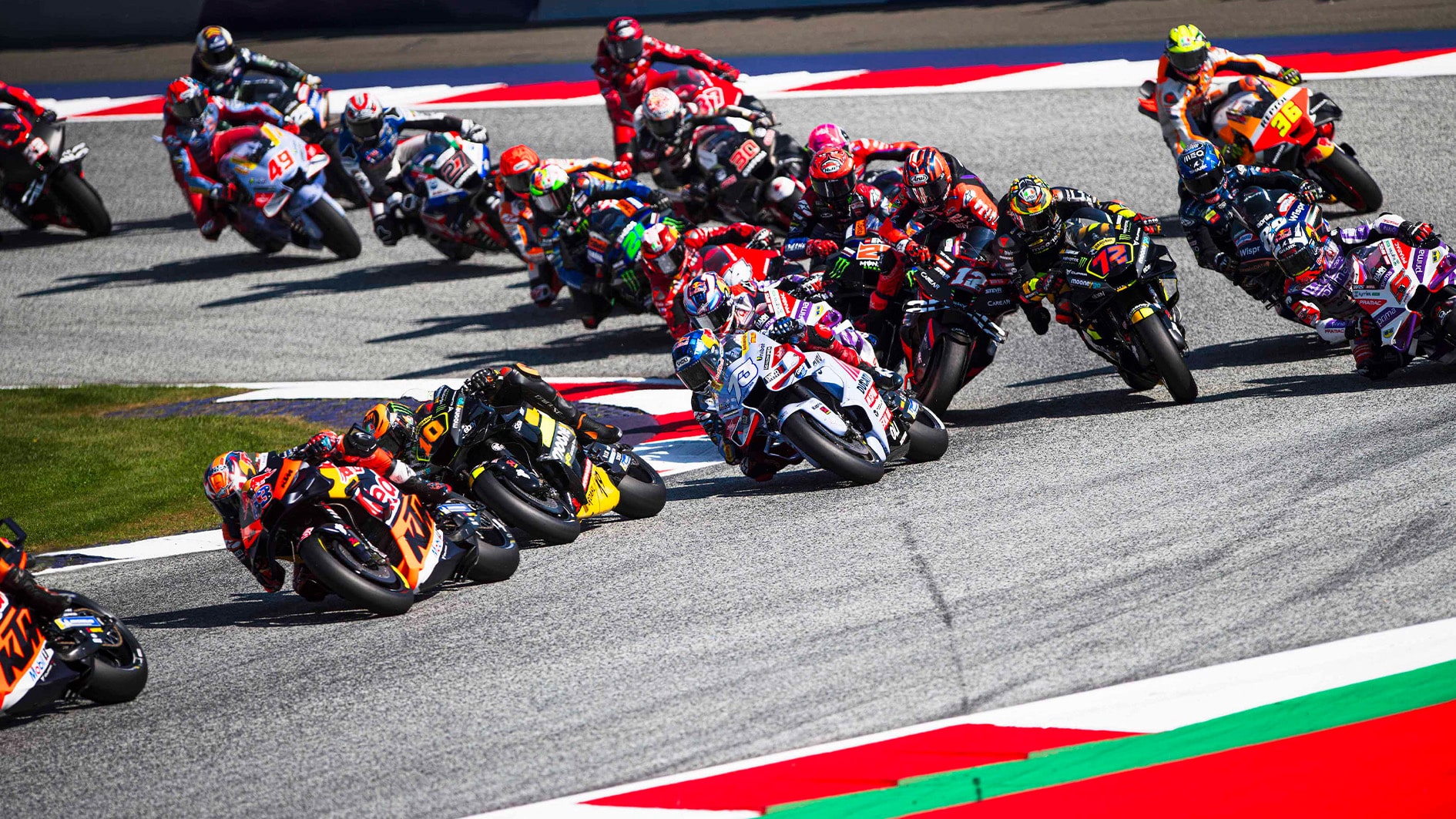And yet everyone in the paddock is going racing, just like the riders on the grid and the mechanics in the garages, except they’re not opening throttles, squeezing brakes and spinning spanners, they’re wheeling and dealing and signing, sealing and delivering, hopefully.
The battle for the 2024 MotoGP grid is one such moment where these discussions — which sometimes become arguments — may have an important effect on next year’s racing, so they shouldn’t be ignored.
So let me begin…
There are two big issues at stake here.
Pierer Mobility AG (that’s KTM, GASGAS and Husqvarna) currently has two teams and four bikes on the grid but wants to run an extra team next year, because racing’s most famous beverage/motorcycle entity – Red Bull KTM – has such a bulging portfolio of riding talent that it doesn’t have enough room for it all.
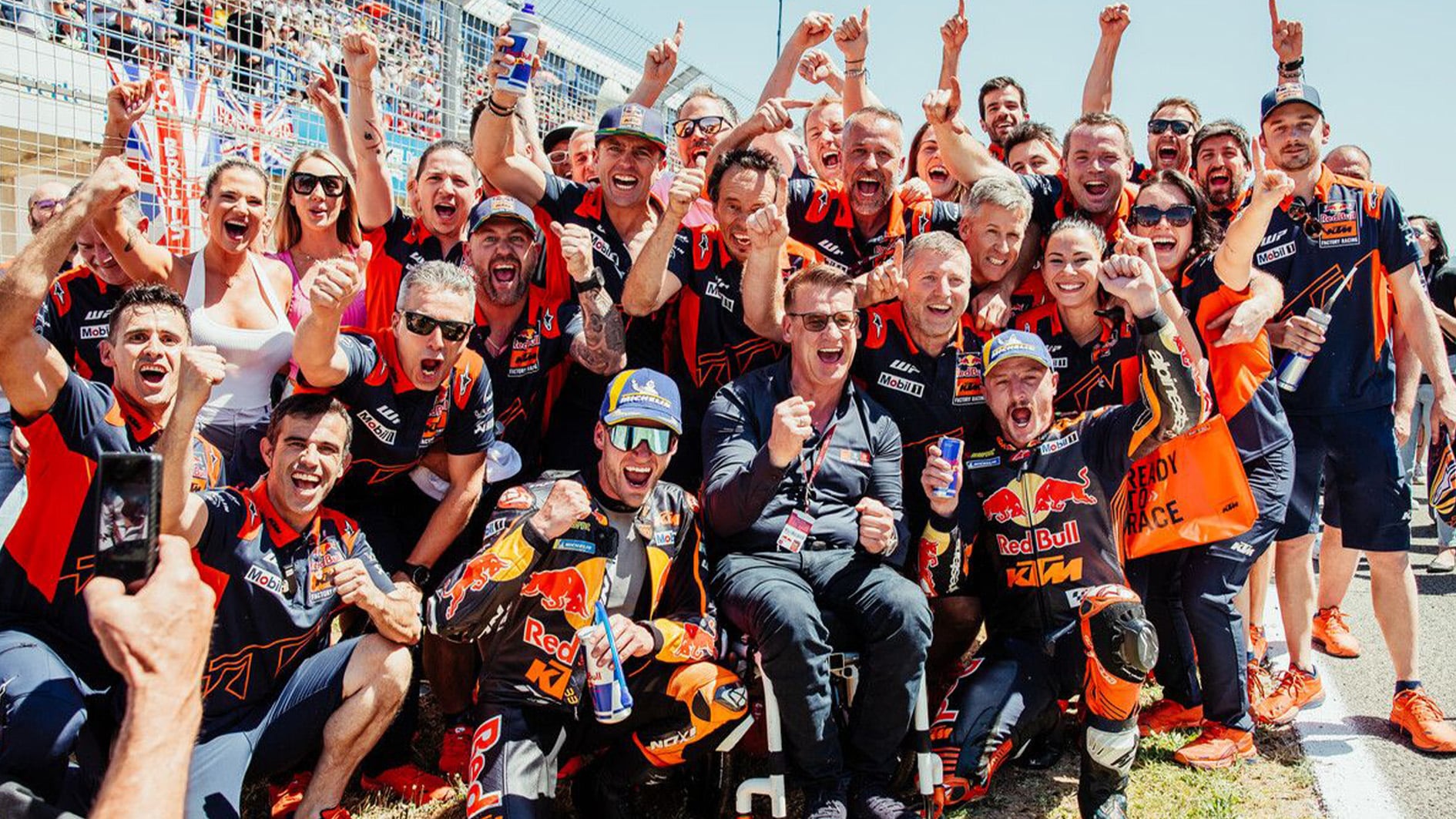
Red Bull KTM is on a roll right and its parent company wants to run a third MotoGP team next year. Will Dorna allow it?
KTM
Right now Pierer Mobility has five riders contracted to contest the 2024 MotoGP championship: Brad Binder, Jack Miller, Pol Espargaró, Augusto Fernandez and current Moto2 leader Pedro Acosta. That’s one more rider than bikes, which means that KTM is going to have to break one of its riders’ contracts, unless it can create another team.
MotoGP currently has 22 bikes on the grid, following Suzuki’s exit at the end of last year. That’s two fewer bikes than the maximum of 24 specified by rights-holder Dorna. The company imposes this limit because Dorna offers significant financial support to all independent teams (that’s six teams of 11) and also offers financial incentives to the factories that supply them with bikes. Thus each indie team costs Dorna six to seven million Euros per year.
HRC has already said that it will let Márquez break his current four-year contract
Dorna introduced this system of massive financial support for the lower half of the grid half a decade ago. For some reason motorcycle racing never attracts the financial support it deserves, so MotoGP’s right-owners had to dig deep to ensure the entire grid has enough budget to be competitive. It’s one of the best things Dorna has ever done.
This is why Dorna can’t keep expanding the grid, because it doesn’t have the money. Plus Dorna is happy with 22 bikes. I agree, 22 is enough. After all, who really cares who finishes 21st or 22nd, let alone 23rd or 24th?
But why can’t KTM have those two vacant slots on the grid, if it wants them? Because the vacant slots are reserved for a factory team, because they belonged to Suzuki, not an indie team. Dorna wants to leave the slots open, just in case another factory wants to join the championship.
I see Dorna’s point, but I cannot see another factory coming into MotoGP any time soon, especially because it would take its engineers many, many years to catch up in the aerodynamics race.
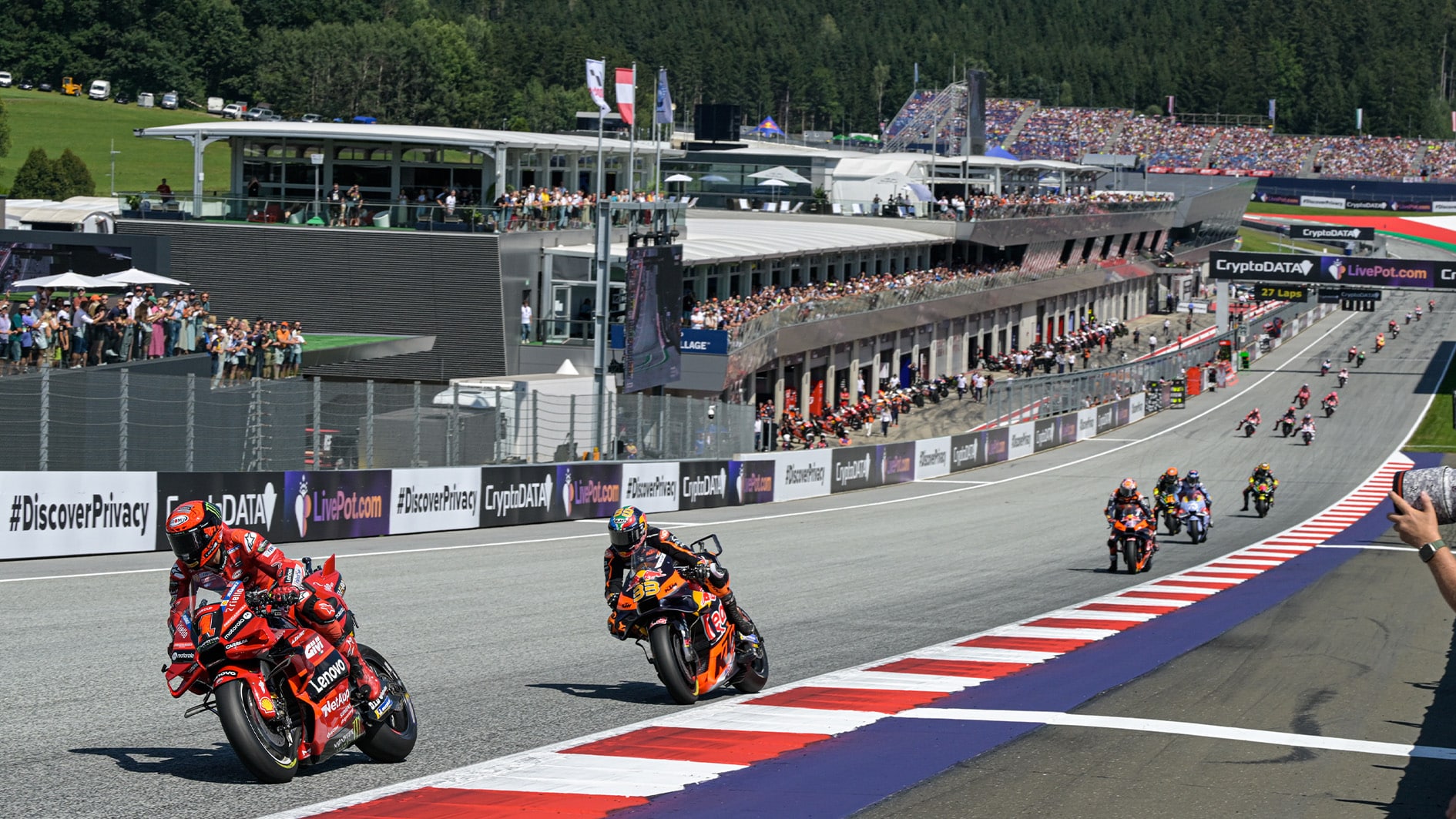
Motorcycles with Formula 1-inspired aero dominate MotoGP now, so what chance does a new manufacturer stand coming into the series?
Dorna
One of the main reasons Dorna introduced the control ECU in 2016 was for this same reason – to encourage new manufacturers into GP, because they wouldn’t need to spend many, many years catching up their rivals in the rider-control electronics race.
“Without the control ECU, KTM may have said no to MotoGP,” KTM test rider Alex Hofmann told me in 2016.
Obviously, control aero will never happen, because all the bikes would look the same, so why would any big brand come into MotoGP knowing it would most likely struggle to be competitive for a long, long time?
So, that’s one point.
